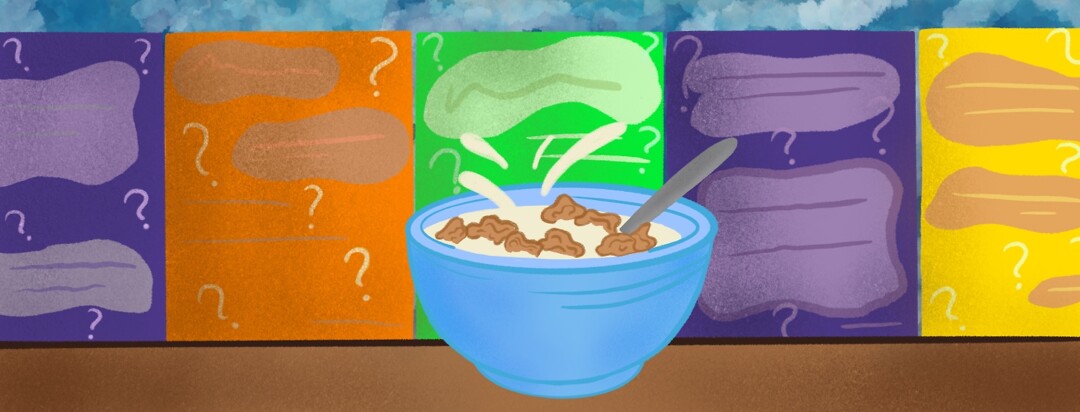How to Choose Healthy Cereal Options
For some reason, every once in a while, I have a craving for a cold bowl of cereal. This is the breakfast I had almost every morning as a kid, so it definitely provides me with a sense of nostalgia. Unfortunately, most cereals on grocery store shelves contain high amounts of sugar, no fiber or protein, and are basically empty calories. Healthy cereals are few and far between, but this article will discuss how to find healthy types of cereal and different brands that may fit into your type 2 diabetes diet.
What makes cereal unhealthy?
If you walk through the cereal aisle in the average grocery store you might have noticed that most cereals are not nutritious. I am a super nerd when it comes to reading ingredient labels, so I looked at many different cereal labels. Here are things to avoid that are commonly listed as ingredients in a box of cereal:
- Cane sugar, corn syrup, or other names for sugar: If the first ingredient listed on a box of cereal is cane sugar or high fructose corn syrup, put it down! Eating cereal that contains a high amount of sugar will likely spike your blood sugar. Watch out for all of the different names for sugar.
- Processed flours: This type of flour is a broken down and heavily processed carbohydrate. Ingredients like white flour provide little nutritional value and can also spike your blood sugar.
- Hydrogenated oils: Some cereals will directly have "hydrogenated oils" listed in the ingredients. These are bad because they are a part of the trans fat group, and can spike LDL cholesterol.
Also, it is important to be aware of the serving size of cereal. Often the serving size is around 3/4 of a cup, but we often do not eat just the serving size in a bowl of cereal. If you're doubling the serving size, you will also be doubling the amount of sugar.
Finding healthy cereal for type 2 diabetes
It can be tricky to navigate the cereal aisle and pick out a healthy option, but here are some things you should look for on the ingredient list and nutrition label:
- High fiber content: Fiber slows down the absorption of sugar into the bloodstream and also keeps you full for longer.
- Low sugar content: Starting your day out with a sugary breakfast will likely negatively affect you for the rest of the day. Opt for low sugar options instead.
- Whole grains: Whole grains contain more fiber and protein than processed grains and flour.
- Protein:Protein helps you stay full.
Cereal brands
Here are just a few cereal brands that have diabetes-friendly options. This is certainly not a comprehensive list!
- Bob's Red Mill or Alpen Muesli: Muesli is essentially unbaked granola, and it contains an assortment of delicious and healthy ingredients like oats, nuts, seeds, and dried fruits. These brands do not contain added sugars, oils, or processed flours.
- Uncle Sam: This brand produces two types of cereal; wheat berry flakes and raisin bran. Neither contains added sugar and both provide fiber and protein.
- Catalina Crunch: This no-sugar-added cereal brand was actually created by someone who has type 2 diabetes! The cereal from this brand is made from a protein flour mix and comes in exciting flavors like chocolate mint, maple waffle, and fruity. The only downside is that this brand is pricey - one bag of cereal costs around $8.
- Make your own granola! Granola is one of those foods that seems like it should always be healthy, but unfortunately, this is not the case. Many granolas are filled with sugar and processed carbohydrates. Luckily it is quite easy to make your own granola. We have recipes on our site for seedy grain-free granola, coconut granola, and basic granola.
Do you enjoy eating cereal? If so, what brands do you like?

Join the conversation